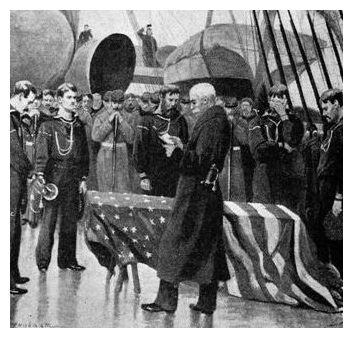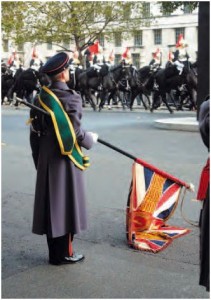“Don’t let the flag touch the ground, or you will have to burn it!”
While still a small boy I learned my first rule of flag display as I waved a small handheld flag and accidentally let it touch the floor. My older sister came bounding across the room. “Johnny,” she scolded “don’t let the flag touch the floor! If you do, you have to burn it.”
I believed her, so I went outside and burned the little flag. It was a pretty silk flag measuring about five by eight inches, and even in a small breeze it waved beautifully. I didn’t want to burn the flag, but rules are rules. My belief in that rule was not uncommon. Even today school children and adults will, when asked, often recite the rule, “If a flag touches the ground you have to burn it.” Trouble is that it is not true.
Pairing the rule about the flag not touching the ground with burning a flag is not part of the U.S. Flag Code. The code actually lists forty rules of flag display and one rule does stress, “The flag should never touch anything beneath it, such as the ground, the floor, water, or merchandise.” But burn the flag? No, it doesn’t say that at all. Rather it only says that if a flag is worn, faded or soiled to the point is no longer a fitting emblem of the nation it should not be simply discarded or thrown in the trash. Then it is appropriate to destroy the flag by burning.
However, returning to the first point, the flag should never touch the floor or ground. Fair enough and it makes good sense. If we carry clothing on hangers, we would not want any of the fabrics to touch the floor or ground either. Any cloth item dropped may become soiled or damaged. That makes sense.
Strange as it may seem to American, that attitude is not universally shared. Not only that, it is not an idea that has always been part of American thinking. Examples in our history and in other cultures include display of flags arranged so they draped onto the floor or ground.

A Burial at Sea in the 19th Century.
Photographs taken in the nineteenth century often show the Stars and Stripes displayed with the flag draped onto the floor, deck, or ground. An illustration of a burial at sea shows the sailor’s remains covered by the U.S. flag. The ends of the flag fall in folds upon the deck as the funeral service is read. Sailors paid no attention to their national ensign touching the ship’s deck. Obviously no disrespect is intended or taken.

Trailing the flag at a British Parade.
Even today, a British military custom calls for troops to “trail” their military unit’s flag. In this salute, the staff or pike on which the flag is mounted is swung down so the flag drags on the ground before the sovereign. Is this a sign of disrespect? No, just courtesy to the monarch.
Still, the restriction of the Flag Code has deeper meaning. It is not only imprudent to let the flag touch the ground, it is disrespectful. However, that is a story for another day. A future blog posting will tell how this tradition may have began.
